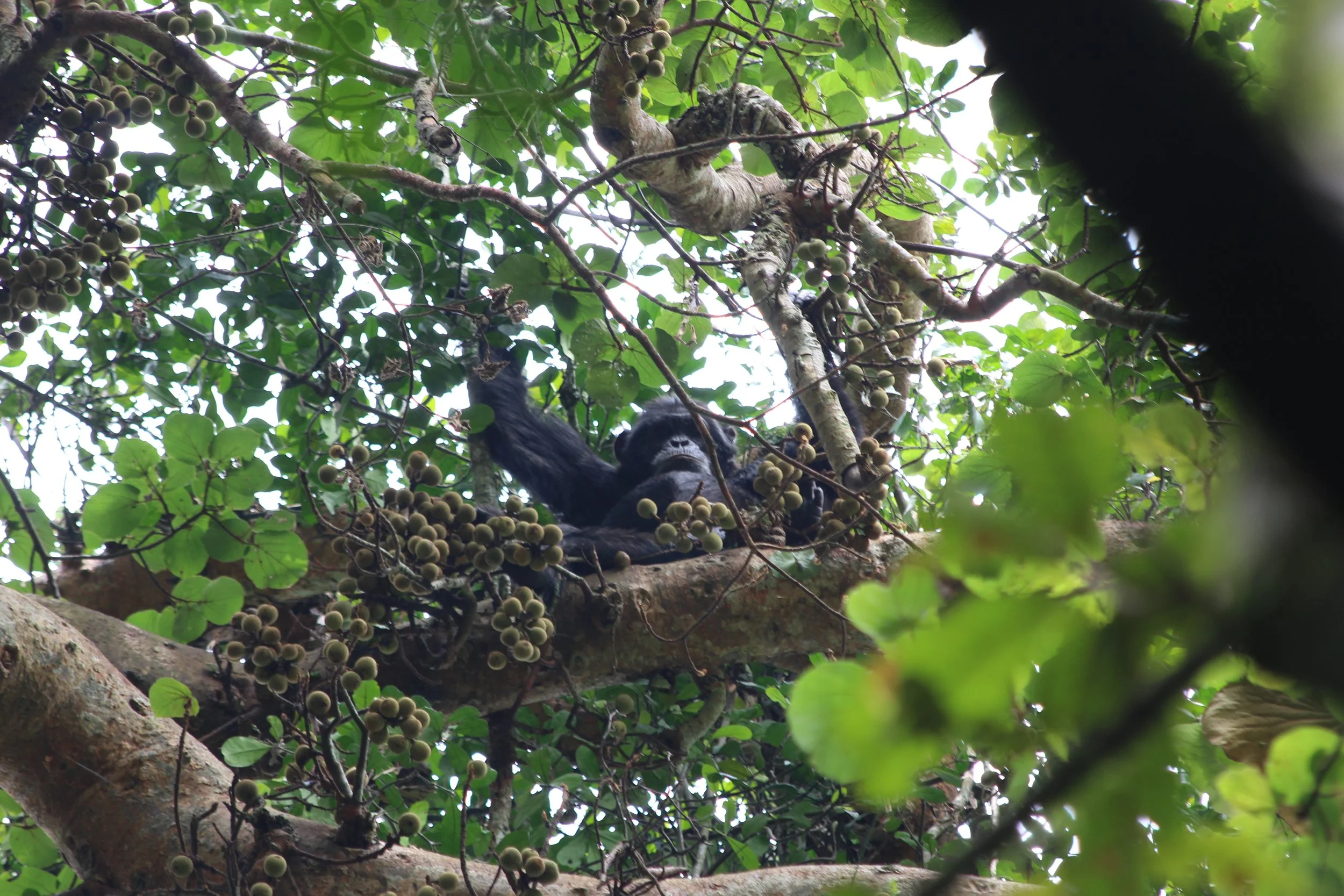Future research
My PhD research has led me towards three distinct directions:
(1) the in-depth study of fermentation-related primate ecology and behavior,
(2) the analysis of modern and ancient human DNA for detection of population-wide signals of intentional alcohol production
(3) the study and characterization of natural microbial competition within fruits, in particular the biogeographic distribution of Saccharomyces cerevisiae across Africa
1. How do fluctuations in dietary ethanol affect chimpanzee behavior?
By following a focal individual and recording feeding rates, it may be possible to directly estimate dietary ethanol ingestion in primates. Combined with urine metabolite assays of ethyl glucuronide, this approach could identify the influence of alcohol exposure on chimpanzee behavior in real time. This potentially has implications for social behaviors such as grooming, displays, as well as hunts and patrols. Periods of high fruit availability are known to influence the chimpanzee estrous cycle, which may be responding in part to elevated ingestion of dietary alcohol.
Also of interest are the implications of fermenting nectar for pollinators, which can be studied in similar detail by, for example, assaying the hemolymph of bees and other insects.
2. Searching for evidence of intentionally directed fermentation in the ancient human genome
The geographic and temporal origins of intentionally directed alcohol production by humans has so far eluded science. Meanwhile, our contemporary attraction to alcohol, its psychological and social effects, and its associated addictive properties remain one of society’s great mysteries. I propose to study ancient human DNA and to search for a signature of selection due to the intensified consumption of alcohol among early populations. Knowledge of the ancestral context of the domestication of alcohol production could profoundly reshape our narrative around human alcohol use and provide new insights into treatments for alcohol abuse.
3. Study of the microbial ecology of fermenting fruit to reveal the origin of the brewer’s yeast Saccharomyces cerevisiae
Although brewer’s yeast (Saccharomyces cerevisiae) is one of the best studied model organisms, whose genome was sequenced before that of humans, to this day we know shockingly little about its natural ecology, where it originated, and how it made its way into human hands to become one of the earliest organisms to be domesticated. Currently thought of as an ecological generalist, I instead propose that S. cerevisiae originated in Africa in association with the marula fruit (Sclerocarya birrea), and was spread around the world by migrating humans along with fruit flies (Drosophila melanogaster). I propose to isolate and sequence microbes naturally growing within fruits across a north-south gradient in Africa following routes of early human migration, and show that brewer’s yeast and its profoundly high ethanol tolerance first evolved in South Africa. These results could have profound implications for the origins of modern civilization, since this would imply that intentional alcohol production was commonplace long before the widespread use of agriculture. It may also result in discovery of pre-domestication varieties of brewer’s yeast that express novel functions with industrial applications.




